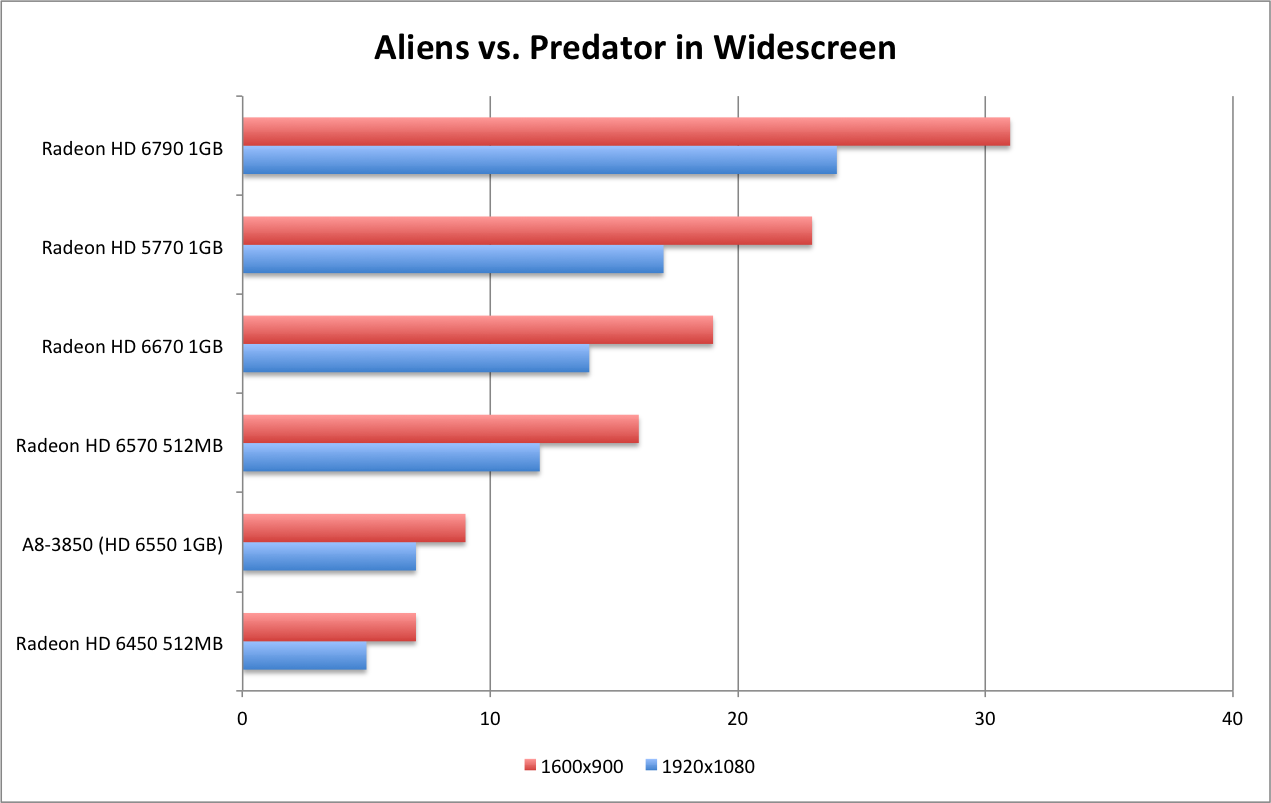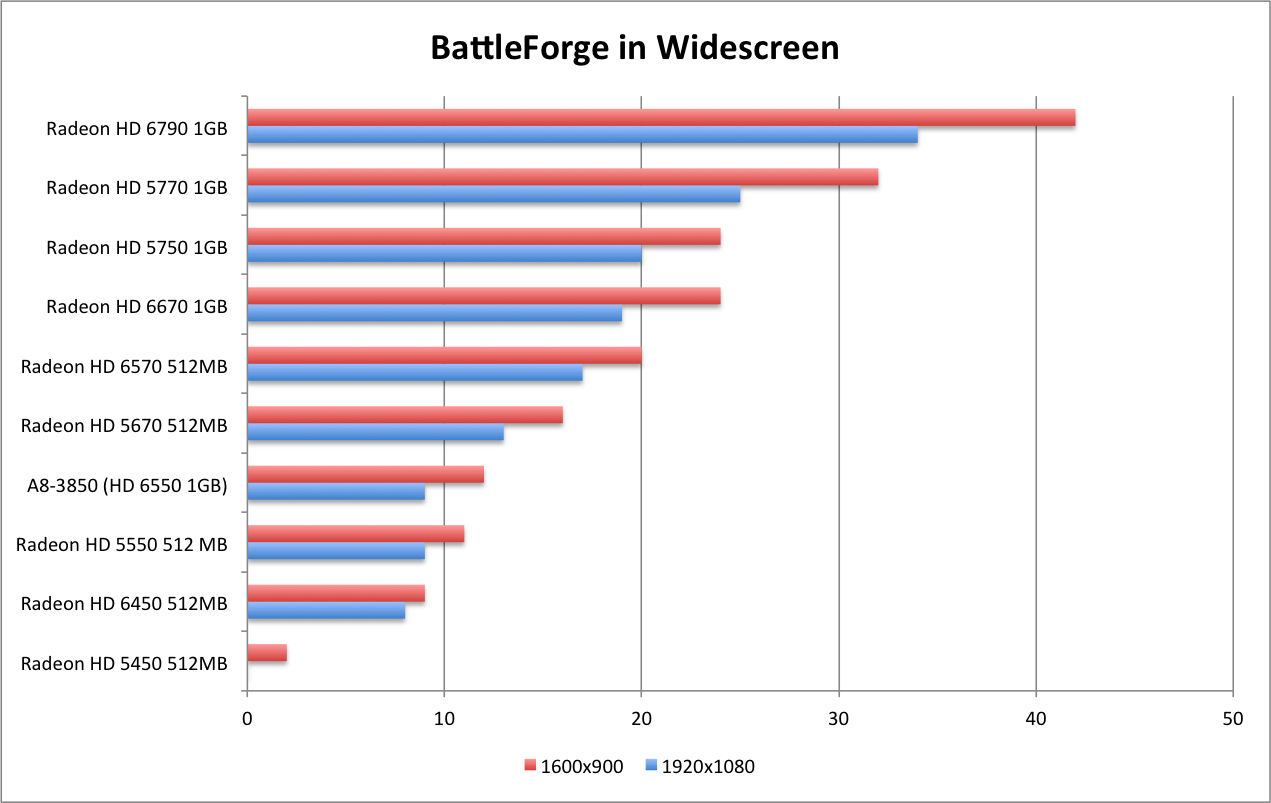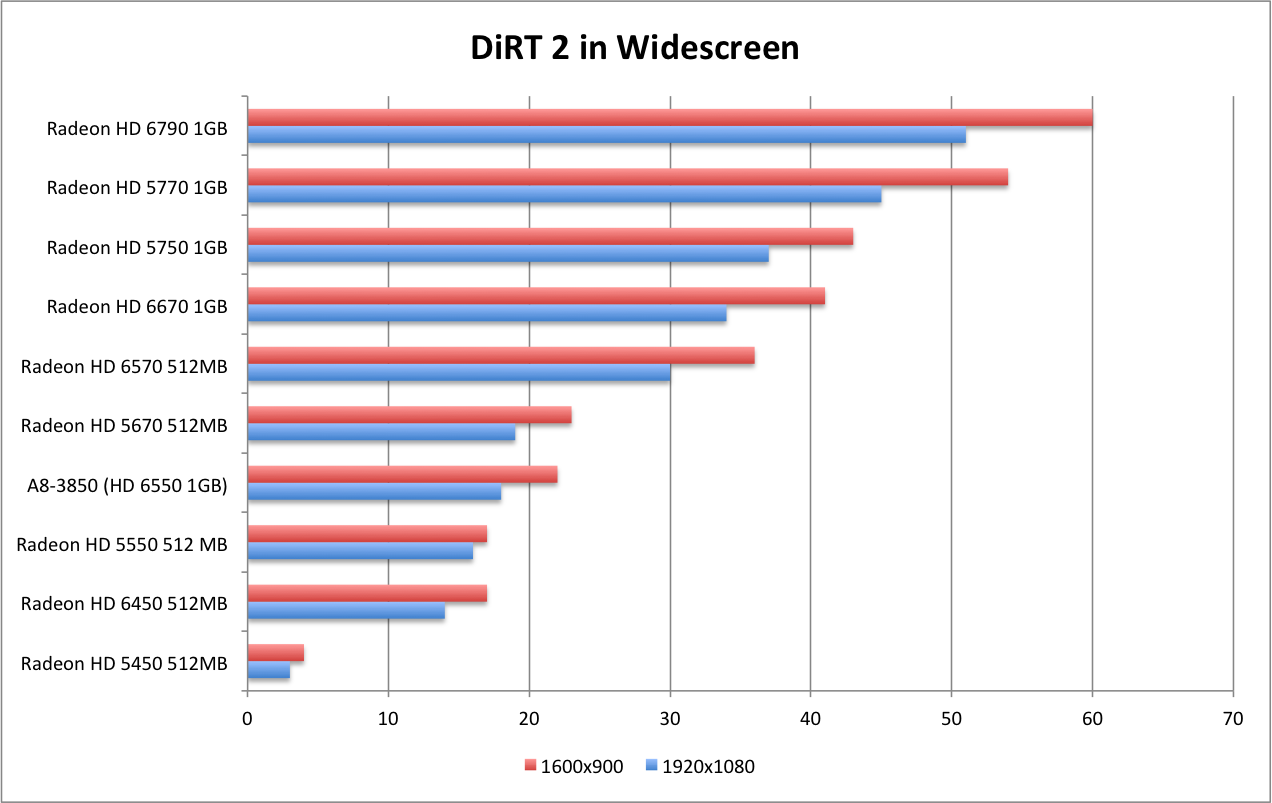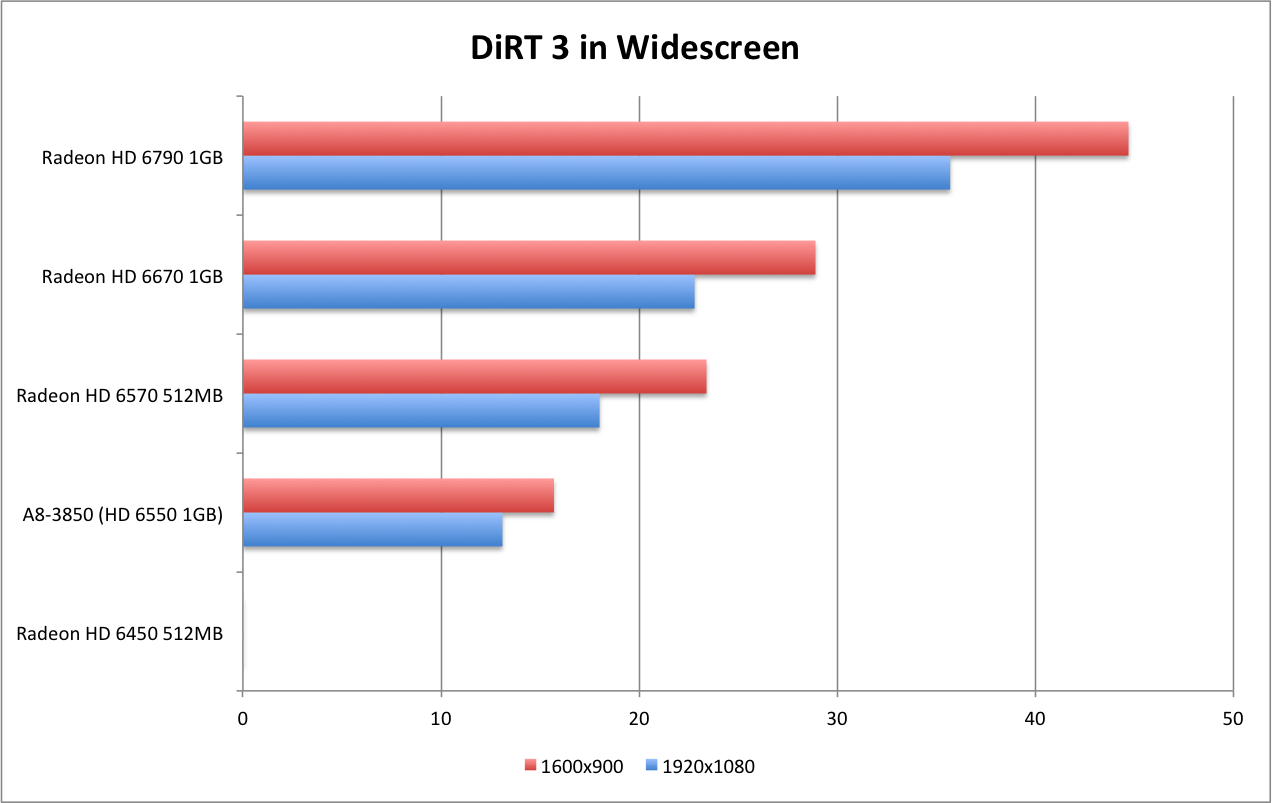AMD Fusion A8-3850 Platform Review - Aliens vs. Predator, Battle Forge, DiRT 2 & DiRT 3
Aliens vs. Predator
Aliens vs. Predator (AvP) is an FPS title from Rebellion Studios. It allows players to take on the role of either an Alien, a Predator or a human space marine. While the title received mixed reviews, it is a DX11 graphics powerhouse that can bring many machines to their knees.
The demo follows a number of Alien creatures, and makes extensive use of shaders and tessellation. The mainstream Fusion APU stand up to the AvP demo, and honestly I don't expect it to. It is a difficult demo that is made to stress even high-end cards.

Battle Forge
Battle Forge is the free-to-play RTS from Electronic Arts. It offers a steampunk/fantasy RTS experience, where armies are build based on "decks" of cards similar to the Magic: The Gathering card game.
Battle Forge is one of AMD's spotlight (my terminology) games, as it offers both DX11 and proper Eyefinity support. The game offers a number of DX11 features, and a wealth of options for tuning performance. Specifically, Battle Forge uses DX11 and Shader Model 5.0 to compute HighDefinition Ambient Occlusion (HDAO). For our tests we maxed out all of the settings and forced DX11 through the config.xml file.
The APU doesn't come near to crossing 30fps at max settings, though cards above to pull significant gains. The real breakthrough appears to be at levels above the A8-3850.

DiRT 2
Dirt 2 is the second iteration of the Dirt rally racing series from Codemasters. Like Battle Forge, Dirt 2 is a spotlight game for AMD. Like Battle Forge it offers proper Hor+ gameplay in Eyefinity and DX11 support. Unless the user goes into the "hardware_settings_config.xml" file and forces DX9, Dirt 2 runs in DX11 mode. Unfortunately Dirt 2 does not offer a DX10 mode. This is unfortunate, as many games show improved performance when running in DX10 vs. DX9.
The true (noticeable) DX11 features come in to play based on the user settings in the in-game graphics options. Several key features are the "Hardware Tessellated Dynamic Water" (achieved through "Ultra" quality water), "Hardware Tessellated Dynamic Cloth" (achieved through "High" quality cloth), and DX11 Accelerated HDAO (through "High" quality HDAO).
The DX11 water and cloth offer more realistic geometry and movement. The DX11 water produces actual waves in deep puddles (as the player drives through), rather than simple "swirls" in the texture surface. The DX11 cloth offers more realistic ripples and waves in the cloth material over the DX9 version. On the other hand, the DX11 HD Ambient Occlusion (HDAO) offers an accelerated computation path.
DX11 doesn't necessarily provide earth-shaking changes to gameplay. But, it provides more realistic "movement" in the world's objects - cloth, water, grass, etc. While a DX9 or DX10 game is perfectly enjoyable, the DX11 technology offers better immersion by making the "little things" more lifelike. Additionally, it offers better computation paths through increased parallelism (and better computation paths for DX10), much like DX10 offered better performance (over DX9) in games such as Far Cry 2.
The A8 APU doesn't hit 30fps at max settings, but it could with the graphics quality turned down. Also, it could with the resolution in the 720p range.

DiRT 3
The DiRT 3 benchmark ups the ante with better DX11 graphics and a more complex scene (including snow flurries). One thing to note is how comparable DiRT 2 and DiRT3 are, even considering the DX11 baseline of DiRT3 and the more complex benchmark course.

